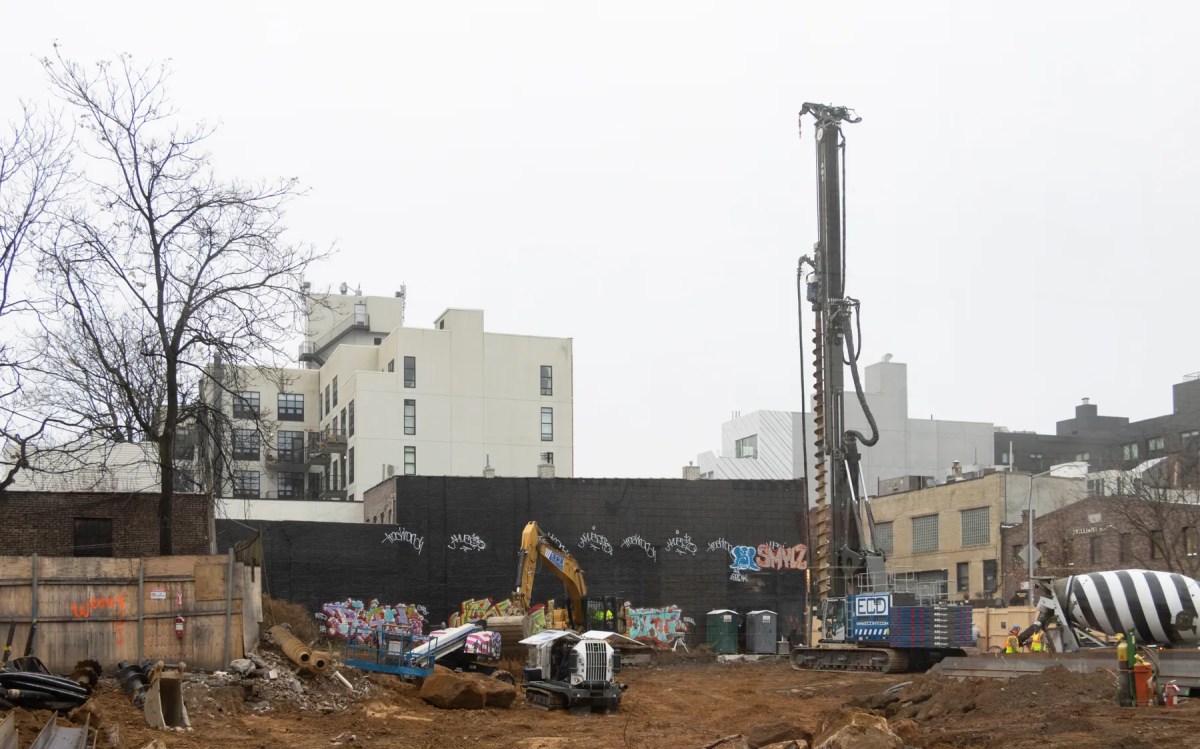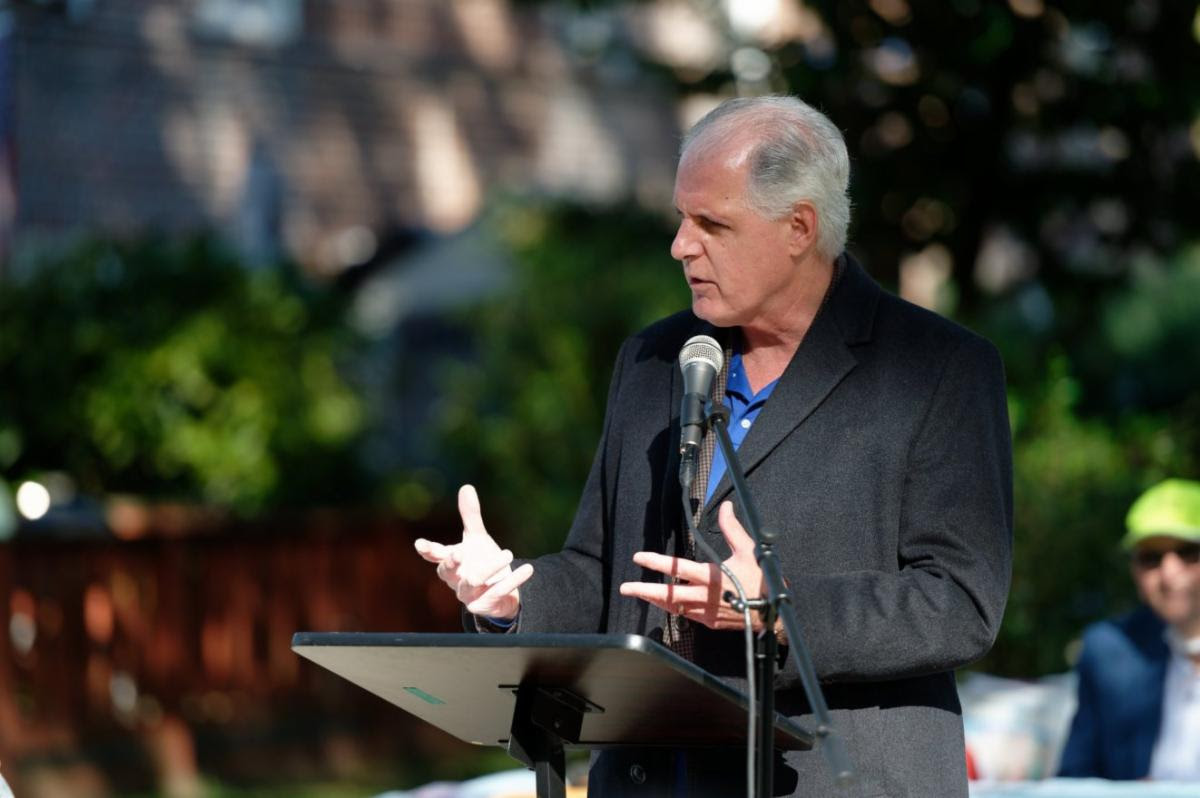
Dirt roads surrounded Co-op City in 1969 when Linda Berk and her family moved in.
The hulking complex was still rising, cutting an imposing figure on the northeast Bronx landscape.
Built as a spacious haven for middle-class families, Co-op City was not known for its architectural artistry. But Berk, then a teenager, did not notice.
“I thought it was beautiful,” said Berk, now chair of the Riverbay Board of Directors, which runs the co-op. “My sister and I had a big room with air conditioning, and there was that view.”

Fifty years ago, the first of Co-op City’s 42 towers and town houses opened their doors to residents, promising a sweeping, airy space with schools, parks, stores and — most important — a chance to own a piece of the American dream.
Since then it has weathered problems with faulty construction, unscrupulous board members and strained finances.
But residents and board members say Co-op City, with its 15,372 units, has remained an affordable oasis in a city that has all but priced out its middle class.
And unlike other housing built under the Mitchell-Lama program, its residents have resisted numerous efforts over the years to opt out of the regulated system and sell on the lucrative private housing market.
The cost of apartments ranges from $13,500 for a one-bedroom unit to $29,250 for a three-bedroom. Carrying charges are about $230 per room.

“Residents were enticed and told if they sold on the open market, they would make a lot of money,” said James Vacca, a former city councilman and district manager of Community Board 10, who now teaches at Queens College. “But they responded that it would not be right for their neighborhood. I’m sure that was a challenge.”
Bernie Cylich, a longtime resident and board member, said the community takes pride in having taken the high road.
“One of the things we feel as we celebrate the 50th anniversary is how we are showing the nation that good affordable housing for working people can be provided,” said Cylich, who moved into Co-op City with his wife and two young children in 1970.
Constructed on the site of a former history-themed amusement park called Freedomland U.S.A., Co-op City was the brainchild of labor leader and developer Abraham Kazan and the Amalgamated Clothing Workers of America, which established the United Housing Foundation for the endeavor.
Kazan was also the force behind Rochdale Village in Queens and the Amalgamated Housing Cooperative in the Bronx, one of the first co-ops in the nation.
Bronx historian Lloyd Ultan said despite Kazan’s track record, some aspects of the Co-op City plans raised the ire of then-Bronx Borough President Herman Badillo.
“He saw the plans and hit the ceiling,” Ultan said. “It called for all of the exiting streets to lead to Westchester County. None of them emptied out into the Bronx.”
Ultan said there were also concerns about the project contemplating nothing but towering structures. Town houses were added, and the street pattern was changed.
In December 1968, the first tenants moved into Co-op City, as construction continued.
“Apartments were spacious and bright,” said Cylich. “You had cross ventilation, air conditioning and parquet floors.”
It was not long, however, before problems arose, due to shoddy construction and the challenges of building on swampland.
“I remember when they were putting in the piles,” Ultan said. “The piledrivers were pounding and pounding and they never hit solid bedrock.”
The Mitchell-Lama program, enacted in the 1950s, provided low-interest loans and property tax breaks to development companies that constructed housing for middle-class New Yorkers. Residents who met income requirements could purchase shares at a low rate and sell them back at a limited profit.
“Mitchell-Lama really was a scheme to reward developers,” said Annemarie Sammartino, a professor of history at Oberlin College in Ohio, who grew up in Co-op City, and is writing a book titled “Freedomland: Co-op City and the Story of New York, 1965-1990.”
“To maintain Mitchell-Lama housing and stay affordable, it would require an influx of capital from the city and the state,” said Sammartino. “Some places get out of the program or you see this ballooning debt, like at Co-op City. You really need an ongoing subsidy, but that’s politically impossible.”
Angry about construction defects, tenants held back their carrying charges during a so-called “rent strike” in 1975 and eventually took control of the complex. A subsequent multimillion-dollar repair plan was mired in corruption.
Upgrades and repairs remain a challenge to this day.
“We are trying to maintain affordability but keep it strong and viable by maintaining the infrastructure,” said Berk. “There’s always a balance.”
The population has shifted over the years. Once predominantly white and Jewish, Co-op City now has a large African-American and Latino population. The average age of residents is much older now, and it has been named a Naturally Occurring Retirement Community.
“For all the drama around Co-op City’s history, the fact it still exists 50 years after the first families moved in … and it’s still a pretty nice space is important," Sammartino said.



































